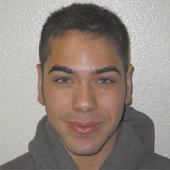Pateel Mekhitarian
Staff Writer
One of the Armenian courses offered this semester at Fresno State is Armenian 148, “Masterpieces of Armenian Culture.” This unique offering has attracted a wide range of students who are interested in learning about the Armenian culture.
The textbook is The Heritage of Armenian Literature, Volume I, (Wayne State University Press, 2000) written and edited by Agop Hacikyan (Coordinating editor), Gabriel Basmajian, Edward Franchuk, and Nourhan Ouzounian. Professor Barlow Der Mugrdechian introduces students to different aspects of the culture, such as the churches of Armenia, the religious struggles of the Armenians, and the history of the Armenians. This background is essential in the course, allowing students to have a better understanding of the Armenian people as a whole, before the course looks at the major works of Armenian literature.
The Armenian 148 course fulfills the requirements for upper division General Education, in area IC of Arts and Humanities, and also fulfills a requirement for the Minor in Armenian Studies. For this reason, the class has a diverse atmosphere, where there is an opportunity for all students to learn something new. Some students in the class are planning on receiving a Minor in Armenian Studies, while others are simply taking the course due to their curiosity in the culture. At the beginning of the semester, students approached the class with different expectations and interests.

Daren Esqueda, a junior at Fresno State, stated, “I am interested in how Armenian traditions and sayings originated and the historical context in which the stories were written. I also anticipate learning the different styles of Armenian literature.”
Sarah Crawford yearns to learn more about the heritage. She said, “I hope we will learn a lot about how the rich heritage affected the great Armenian writers of history.”
Some students in the class had no previous background of the Armenian culture, prior to starting the course, while others were born and raised in traditional Armenian families. Pa Xiong, a senior at Fresno State, is not Armenian, however has taken an Armenian course in the past. On the other hand, Kristine Shamlikian stated, “I was born in Armenia and I can speak the language.” These differences between the students provide for a more engaged and interesting class environment.

The content of this course is very appealing and fascinating because it explains the origin of literature in the Armenian culture. We currently know about the history of the Armenians due to the significant historians who recorded important events.
The discovery of the Armenian alphabet in the early fifth century A.D. provided a means for the Armenians to write in their own language for the first time. A major well-known historian was Movses Khorenatsi, who wrote in Armenian in the fifth century, and whose history covers the period form the origins of the Armenians to the fifth century. He is responsible for recording the earliest oral epics of Armenian culture, such as Hayk and Bel, the Legend of Aram, and Ara the Handsome. These traditional stories were orally transmitted from village to village in ancient times. Khorenatsi recorded these oral traditions, which preserved them for future generations to enjoy. The works of other historians such as Agatangelos and Yeghishe have been discussed as well as the great tenth century poet St. Gregory of Narek. There are many more writers to be discussed and analyzed in this course.
“Masterpieces of Armenian Culture” is a distinctive course that explores the origins of Armenian literature. Early historians managed to preserve and pass on the culture of the Armenians through recording significant events in Armenian history. Armenians and non-Armenians today sincerely cherish the efforts of these historians and writers.
 Hye Sharzhoom Armenian Action
Hye Sharzhoom Armenian Action